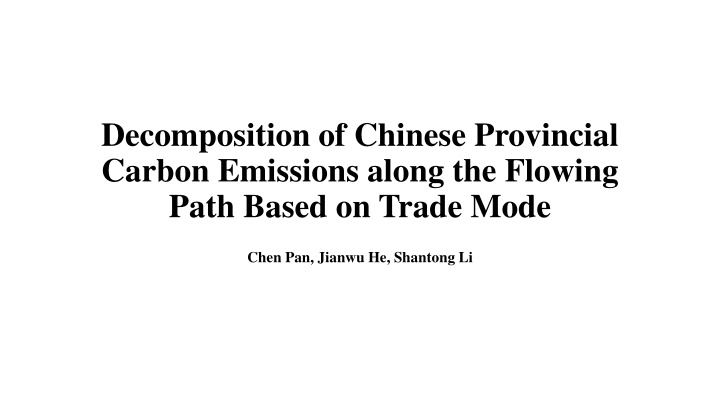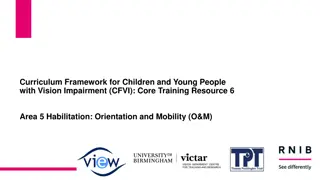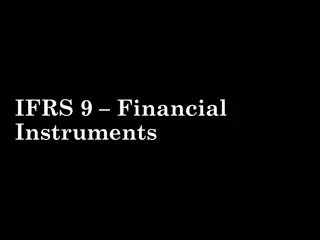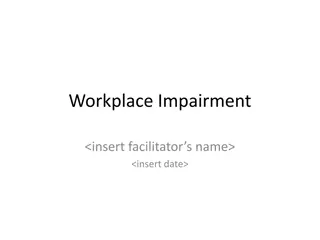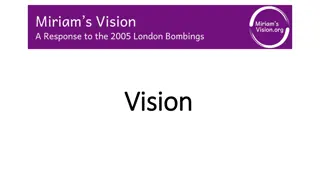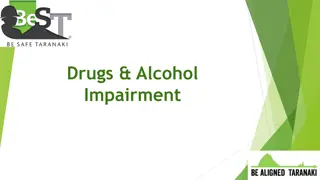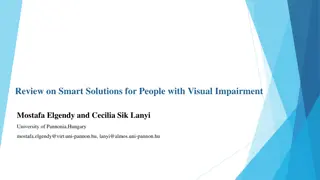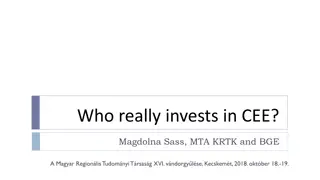Core Training Resource for Children with Vision Impairment
This resource focuses on technology training for children with vision impairment, addressing barriers to access and providing guidelines on using assistive technology effectively. It also highlights the importance of early access to suitable technology for children and young people with vision impairment.
Download Presentation

Please find below an Image/Link to download the presentation.
The content on the website is provided AS IS for your information and personal use only. It may not be sold, licensed, or shared on other websites without obtaining consent from the author.If you encounter any issues during the download, it is possible that the publisher has removed the file from their server.
You are allowed to download the files provided on this website for personal or commercial use, subject to the condition that they are used lawfully. All files are the property of their respective owners.
The content on the website is provided AS IS for your information and personal use only. It may not be sold, licensed, or shared on other websites without obtaining consent from the author.
E N D
Presentation Transcript
Decomposition of Chinese Provincial Carbon Emissions along the Flowing Path Based on Trade Mode Chen Pan, Jianwu He, Shantong Li
Aim of the Research To explore the impact of different value chain division of labor and participation on carbon emissions in China's provinces; And to discuss the implications on how to fulfill carbon peak and carbon neutral (net zero) in China at the provincial level.
Methods and data Methods Following the method for GVC analysis in Xiao et al 2020 ?? 5.1 (??) = ??? ??,???,? I ? ? = ??? +??? ??,? III.b.pp ??,? ??,???,? ? ?=1,? ? ?=1 +??? ??,? II.p ??,? ? ? ?=1,? ? +??? ??,? III.b.pg ??,? ??,???,? ? ?=1,? ? ?=?+1 +??? ??,? ??,? II.g ? ? +??? ??,? ??,? ?=?+1 III.b.gp ??,???,? ? ?=?+1 ?=1 +??? ??,? III.a.p ??,? ??,???,? ? ? +??? ??,? ??,? III.b.gg ??,???,? ?=1,? ? ? ?=?+1 ?=?+1 +??? ??,? ??,? III.a.g ??,???,? ?=?+1 Xiao, H., B. Meng, J. Ye and S. Li (2020). "Are global value chains truly global?" Economic Systems Research 32(4): 540-564.
Methods and data Methods (continue ) ? ? ? ? ? ? ? ? +??? ??,? +??? ??,? ??,? ??,???,? III.c.ppp III.c.ggg ??,? ??,???,? ??,? ??,???,? ??,? ??,???,? ?=1,? ? ?=1,? ? ?=1 ?=1,? ? ?=?+1 ? ? ?=?+1 ?=?+1 ? ? ? ? ? ? +??? ??,? +??? ??,? III.c.pgp III.c.gpg ??,? ??,???,? ??,? ??,???,? ?=1,? ? ?=1,? ? ?=?+1 ?=?+1 ?=?+1 ?=1 ? ? ? ? ? ? +??? ??,? +??? ??,? III.c.ppg III.c.ggp ??,? ??,???,? ??,? ??,???,? ?=?+1 ?=1,? ? ?=1 ?=1,? ? ?=?+1 ?=?+1 ? ? ? ? ? ? +??? ??,? +??? ??,? III.c.pgg III.c.gpp ??,? ??,???,? ??,? ??,???,? ?=?+1 ?=1,? ? ?=?+1 ?=1,? ? ?=?+1 ?=1
Carbon emission of a province Methods and data Embodied carbon emissions in traditional trade II Untraded carbon emissions I Embodied carbon emissions in cross-border production III Methods 14 2 Flow to other regions for intermediate production, and then participate in local final products (single cross- border) Flow to other regions for intermediate production, and then participate in multiple cross-border production networks 1 Flow to international regions Flow to international regions Flow to other provinces Flow to other provinces Participate in multiple cross-border production networks of internationa l regions to form final products Participate in multiple cross-border production networks of internationa l regions to form final products Participate in multiple cross-border production networks of provinces to form final products Participate in multiple cross-border production networks of provinces to form final products international regions Province itself Other provinces
Methods and data Data The world input-output model with Chinese provinces embedded of 2017;
Databases (1) ADB-MRIO 2017 63 countries and regions; 35 sectors. Intermediate Use Final Use Total output China USA China USA China Intermediat e input USA Initial input Total input
Databases (2) Chinese provincial MRIOT Databases: Single regional input-output tables of Chinese provinces; Customs data; Railway transportation data. Method: Minimizing cross entropy method; Gravity model; Intermediate Use Final Use Total output Beijing Xinjiang Beijing Xinjiang Export Beijing Intermediate input Xinjiang Import Initial input Total input
Databases (3) China s customs data HS 8-digit level (8564 commodities in total); Provincial imports tracked by the source countries; Provincial exports tracked by the destination countries.
Embedding the Chinese provincial MRIOT into global MRIOT Aggregation of regions in global MRIOT Australia European Union (excluding Germany) Germany United Kingdom Norway Switzerland Russia Brazil Canada Mexico United States China Taipei,China Hong Kong, China ASEAN India Japan Republic of Korea Rest of the world Australia Austria Belgium Bulgaria Brazil Canada Switzerland People's Republic of China Latvia Cyprus Czech Republic Germany India Ireland Italy Japan Republic of Korea Lithuania Luxembourg United States Bangladesh Malaysia Philippines Thailand Viet Nam Kazakhstan Mongolia Sri Lanka Pakistan Fiji Lao People's Democratic Republic Brunei Darussalam Bhutan Kyrgyz Republic Cambodia Maldives Nepal Singapore Hong Kong, China Rest of the World Mexico Malta Netherlands Denmark Spain Estonia Finland France United Kingdom Greece Croatia Hungary Indonesia Norway Poland Portugal Romania Russia Slovak Republic Slovenia Sweden Turkey Taipei,China
Embedding the Chinese provincial MRIOT into global MRIOT Concordance of the sector classifications The Chinese provincial MRIOT and the global MRIOT are mapped to 27 sectors. No Sector name Agriculture, forestry, animal husbandry and fishery products and services No Sector name No Sector name A1 A10 Non-metallic mineral products A19 Transportation, storage and post Metal smelting and rolled products, metal products Transportation equipment Information transmission, software and information technology services Financial A2 Mining A11 A20 A3 Food and tobacco A12 A21 A4 Textile Textiles, clothing, shoes, hats, leather down and its products A13 Equipment and instruments Other manufactured products, scrap and repairs A22 Real estate A5 A14 A23 Rental and business services Public management, social security and social organization; public facility management Production and supply of electric heating, gas and water A6 Woodworking products and furniture A15 A24 Papermaking printing and cultural, educational and sporting goods Petroleum, coking products and nuclear fuel processed products Chemical product A7 A16 Building A25 Education A8 A17 Wholesale, retail and repair A26 Health and social work A9 A18 Accommodation and meals A27 Other community, social and personal services
Embedding the Chinese provincial MRIOT into global MRIOT Processing of China s customs data HS-IO correspondence relationship; HS-BEC correspondence relationship; Summarizing customs data by province and industry.
Embedding the Chinese provincial MRIOT into global MRIOT Harmonizing the MRIO-relevant accounts across the databases Intermediate Use Final Use Intermediate Use Final Use Total output Total output Intermediate Use Final Use Intermediate Use Final Use Beijing Xinjiang Beijing Xinjiang Export Beijing Xinjiang Beijing Xinjiang Export Total output Total output Beijing China USA China USA Beijing China USA China USA China China Intermediate input Intermediate input Intermediat e input Intermediat e input Xinjiang Xinjiang Import USA Import USA Initial input Initial input Initial input Initial input Total input Total input Total input Total input Total output Total output Intermediate Use Final Use Intermediate Use Final Use Beijing Xinjiang USA EU Japan Beijing Xinjiang USA EU Japan Beijing Xinjiang USA EU Japan Beijing Xinjiang USA EU Japan Intermedi ate input Intermedi ate input Beijing Beijing Xinjiang Xinjiang USA USA EU EU Japan Japan Initial input Initial input Total input Total input
Methods and data Data Data on carbon emissions by province in China in 2017 Sector concordance no sector no sector Agricultural, forestry, animal husbandry and fishery products and services Mining Food and tobacco textile 1 11 Metal smelting and calendering products, metal products 2 3 4 12 13 14 Transportation equipment Equipment and instruments Other manufactured products, scrap and repairs Textile clothing shoes and hats leather down and its products Wood products and furniture Paper printing and cultural, educational and sporting goods Petroleum, coking products and nuclear fuel processing products Chemical products Non metallic mineral products 5 15 Production and supply of electric heating, gas and water 6 16 Architecture 7 17 Wholesale, retail, accommodation and catering 8 18 Transportation, storage and postal service 9 19 Other services 10
Results 1. Structure of carbon emission flows in each province a) By trade type Untraded carbon emissions and embodied carbon emissions from cross-border production and trade account for a relatively high proportion of Chinese provinces' carbon emissions; Due to the different levels of participation in the value chain, the carbon emissions embodied in cross-border production and trade dominate the carbon emissions of the eastern, northeastern and northwestern provinces, while the carbon emissions of the central and most southwestern provinces is relatively low. The leading sectors of carbon emissions in each province have a considerable degree of homogeneity, but from the perspective of different trade mode, the sectors is also related to the tradability of products.
Results 1. Structure of carbon emission flows in each province b) By final destination Provinces have different characteristics of participating in inter-provincial trade and international trade, and their carbon emission flow structure is also different; Carbon emissions flowing to other provinces and international regions account for a relatively high proportion in the emissions of the eastern provinces. The northeastern provinces and some western provinces have a relatively high proportion of carbon emissions flowing to other provinces, while the central provinces and some western provinces have relatively high carbon emissions flowing to themselves. Electricity and heating production, metal smelting are the main sources of carbon emissions, and carbon emissions from transportation, storage and post are also worthy of attention.
Results 2. Carbon flows in cross-border production network Structure of carbon flows in cross- border production network Multiple cross-border production are more effective in stimulating carbon emissions in most provinces in China than a single cross-border trade. It also reflects that Chinese provinces have participated in multiple cross- border production to a higher degree. multiple cross- border single cross-border
Results 2. Carbon flows in cross-border production network Single cross-border production The main path of the embodied carbon emission flow of a single cross-border production in each province is the single cross-border production led by other provinces, that is, it is mainly contained in the intermediate goods flowing to other provinces of China, and then participates in the pure local production of the inflow region. And finally flow to the local final demand; Main paths of the interprovincial one-time cross-border production The main outflow provinces are Shandong, Inner Mongolia, Hebei, Jiangsu; and the main inflow provinces are Guangdong, Jiangsu, Henan, Hebei; The main outflow sectors are the "production and supply of electric heating, gas, and water" and "metal smelting and rolling products, metal products" two high-carbon emission sectors; The main inflow sector is the construction industry, which consumes a large amount of electricity, steel and cement in the production process, and is the sector that consumes the largest demand for high-carbon emission products; In addition to the construction industry, the manufacturing of transportation equipment, equipment and instruments and other service industries have also absorbed a large amount of embodied carbon emissions from a single cross-border production.
Results 2. Carbon flows in cross-border production network Single cross-border production Main paths of the international one-time cross-border production The embodied carbon emissions of a single cross-border production and trade flow to the international region are more concentrated in regions: Jiangsu, Shandong, Zhejiang, Guangdong, Hebei, and Liaoning in the northeast of the eastern coastal provinces flow to the international region through a simple value chain. Higher, which is obviously related to the fact that these provinces have larger exports; The international regions that absorb the embodied carbon emission flow of my country's single cross-border production and trade are mainly the United States, the European Union, ASEAN, Japan, South Korea and other parts of the world; The main source sectors are still the "production and supply of electric heating, gas, and water" and "metal smelting and rolling products, and metal products". Plus "transportation, storage and post"; The largest sector that absorbs the embodied carbon emissions of a single international cross-border production and trade of various provinces is also the construction industry.
Results 2. Carbon flows in cross-border production network Multiple cross-border production The carbon emissions that flow to the multiple cross-border production networks guided by provinces mostly flow to domestic provinces, while the carbon emissions that flow to the multiple cross-border production networks guided by the international regions mostly flow to the international regions. This reflects the multiple production networks is close to the final consumer market; Once the carbon emissions contained in the intermediate products of a province flow to the international region in the first stage, the proportion of the recirculation to the multiple cross-border production networks led by provinces will be very small, which reflects the fact that Chinese provinces are in the middle and low end of the global value chain.
Results 2. Carbon flows in cross-border production network Multiple cross-border production Main paths: "Intermediate products in other provinces--multiple cross-border production networks led by domestic provinces--other provinces" (hereinafter referred to as "province-province-province") "Intermediate products from other provinces--multiple cross-border production networks led by domestic provinces--other countries" (hereinafter referred to as "province-province-international") "Intermediate products from other provinces--multiple cross-border production networks led by international regions--international regions" (hereinafter referred to as "province-international- international") "Intermediate products in the international region--multiple cross-border production networks led by the international region--the international region" (hereinafter referred to as "international- international-international")
Results 2. Carbon flows in cross-border production network Multiple cross-border production " province-province-province" Jiangsu, Shaanxi, Guangdong, Shanghai, Chongqing and other provinces are suppliers of intermediate products with high carbon content , but the carbon emissions contained in these intermediate products mainly come from Inner Mongolia, Shandong, Hebei and other provinces. To a certain extent, it reflects the different division of labor between the two types of provinces in the cross-border production chain. Jiangsu, Shaanxi, Guangdong, Shanghai, Chongqing and other provinces are closer to the middle and lower reaches of the industrial chain, while Inner Mongolia, Shandong, Hebei and other provinces are mostly in the industrial chain. Upstream. The main source sectors are still "production and supply of electric heating, gas, and water" and "metal smelting and rolling products, metal products". In addition, "petroleum, coking products, and nuclear fuel processing products" and "mining industry" also have a large share. Share The "Transportation, Warehousing, and Post" department is also the main carbon emission source department in the "province-province-province" chain. It can be seen that multiple cross-border production has undergone multiple cross-provincial and cross-border trade, and the amount of transportation used More, it is a major impact of multiple cross-border production on the carbon emissions of various provinces; The final destination is still construction, other services, and transportation equipment, equipment and instruments.
Results 2. Carbon flows in cross-border production network Multiple cross-border production "province-province-international" The most prominent provinces are Shandong and Inner Mongolia, followed by Jiangsu, Hebei and other provinces; the international regions that ultimately absorb carbon emissions from this sector are mainly the rest of the world, ASEAN (excluding Myanmar), the United States, the European Union (excluding Germany), and Japan. . Shandong, Inner Mongolia, Hebei, Liaoning and other major carbon-emitting provinces are located in the upper reaches of the industrial chain and provide basic high-carbon emission products. Provinces such as Guangdong, Shanghai, Shaanxi, Zhejiang, Henan, and Chongqing are located in the middle and lower reaches of the industrial chain and provide relatively high technological content. Products with high and low carbon emissions. Obviously, different industrial divisions will have different impacts on carbon emissions in various provinces. Since the flow of final products crosses national borders, the construction industry and other service industries are no longer the main sectors that absorb this part of the flow of carbon emissions. "Equipment and instruments" have become the most important carbon flow absorption sector. In addition, "transportation equipment" And "textile industry" also have a certain status;
Results 2. Carbon flows in cross-border production network Multiple cross-border production province-international-international The provinces with the largest carbon emissions flow are Shandong, Inner Mongolia, Hebei, Jiangsu, Shanxi and other provinces; the final absorbing countries are also the rest of the world, the United States, the European Union (excluding Germany), ASEAN (excluding Myanmar), Japan and other places; The carbon emissions of various provinces are mainly through the intermediate products of coastal provinces such as Guangdong, Jiangsu, Zhejiang, Shanghai, Beijing and other coastal provinces to participate in multiple cross-border complex production networks in the United States, the European Union, ASEAN, Japan and other international regions, and then flow to the final demand of the international region; Regardless of whether it is exporting carbon emissions through intermediate products or final products, the more developed provinces such as Guangdong, Jiangsu, Zhejiang, and Shanghai are all located in the middle and lower reaches of the industrial chain. As a carrier of carbon emissions, their products will emit large amounts of carbon emissions in Inner Mongolia, Shandong, Shanxi, and Hebei. The province s carbon emissions are exported to the international region. Since the two links from the complex production network to the final product occur in the international region, the construction industry has once again become the most important carbon emission absorption sector, followed by "other service industries", "transportation equipment", "equipment", etc;
Results 2. Carbon flows in cross-border production network Multiple cross-border production "International-International-International" The main outflow provinces are Jiangsu, Shandong, Liaoning, Guangdong, Hebei and other provinces; in the international-international-international route that starts from each province, the provinces that provide the initial intermediate products are mainly the provinces with a large export volume in China. Therefore, Guangdong, a major carbon emission province in the atypical sense, is also among the major carbon emission outflow provinces; the international regions that absorb these carbon emissions are mainly the rest of the world, the United States, the European Union (excluding Germany), Germany, ASEAN, and Japan. . Intermediate products in the European Union (excluding Germany), Mexico, ASEAN (excluding Myanmar), South Korea, Japan, Germany, Hong Kong and Taipei, China are the main intermediate carriers in the "international-international-international" carbon emission flow of various provinces; In addition to the high-carbon emission sectors, the wholesale and retail, accommodation and catering in Shandong, Guangdong, and Zhejiang provinces and the equipment and equipment in Jiangsu have also become major carbon emission outflow sectors. This shows that although the carbon emissions of this type of sector are not high, they are connected to the international value chain to a higher degree of division of labor, and thus export a certain amount of carbon emissions through the "international-international-international" path; As the production chain has crossed borders many times and the production links are more complex, the main absorption sectors of this part of carbon emissions are mainly "equipment and instruments", "other service industries", "transportation equipment", etc., and the "construction industry" still Occurs, but less frequently.
Conclusions and Implications Conclusions The ways of participating in domestic and foreign production networks are different for the provinces, so their carbon emissions flow paths would also be different. Carbon emissions flowing to other provinces and international regions account for a relatively high proportion in the emissions of the eastern provinces. The northeastern provinces and some western provinces have a relatively high proportion of carbon emissions flowing to other provinces, while the central provinces and some western provinces have relatively high carbon emissions flowing to themselves. Carbon emissions embodied in cross-border production dominate the carbon emissions of eastern, northeastern and northwestern provinces. Different industrial divisions have different impacts on carbon emissions in the provinces. Low-carbon emission products produces by provinces in the middle and lower reaches of the industrial chain contain a large amount of carbon emissions from the provinces in the upper reaches of the industrial chain. The former act as a carrier of carbon emissions and "pass" the latter's carbon emissions to other provinces or export to international regions. In terms of the international carbon flows, the intermediate products of EU (excluding Germany), Mexico, ASEAN (excluding Myanmar), South Korea, Japan, Germany, Hong Kong and Taipei of China are the main intermediate carrier of emissions in the path of international-international-international . The main carbon emission outflowing sectors in the provinces are mostly typical sectors with high carbon emissions; sectors of "construction", "other service industries", "equipment and equipment", "transportation equipment" and other sectors have large carbon absorption. But the carbon emissions embodied in the multiple cross-border production networks led by Chinese provinces, which eventually flow to the international region are mainly embodied in high technical products, such as "equipment" and "transportation equipment".
Conclusions and Implications Implications Chinese provinces have different roles in the division of labor and different industrial structures in the production network, and different emission reduction paths can be adopted. Be wary of the potential unbalanced impact of international climate policies such as carbon tariffs on low-carbon development in provinces of China, which might cause greater difficulties in reducing emissions in underdeveloped regions.
